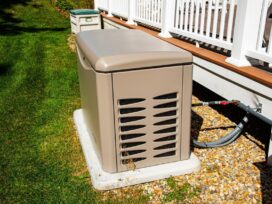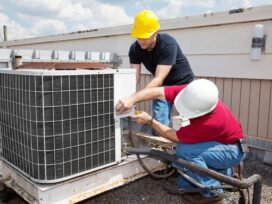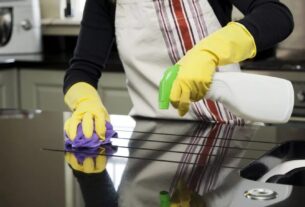
Understanding the Process of Slab Leak Detection
How Homeowners Can Perform Basic Checks to Suspect a Slab Leak
Detecting a slab leak early can save homeowners in Riverside, CA, from potential structural damage and costly repairs. If you suspect a slab leak, start by observing the common signs that often indicate a leak beneath your concrete foundation. These signs include:
- Unexplained spikes in your water bill: A sudden increase in water usage that cannot be accounted for by regular activities like watering the garden or filling a swimming pool might indicate a leak.
- Sounds of running water: If you hear water running when all taps are turned off, it’s possible that water is escaping from a pipe under your slab.
- Moisture or mildew under carpets: This could be a sign that water is seeping up from the slab and into your home.
- Cracks in the floor or walls: Any visible cracks might be an indication that the slab has shifted due to water leakage.
- Hot spots on the floor: These can occur if a hot water line is leaking under the slab, heating a specific area of the floor above it.
The Role of Water Meters in Identifying Unusual Water Usage
Your water meter is a valuable tool in confirming suspicions of a slab leak. To use your water meter to check for leaks:
- Ensure no water is being used: Turn off all taps and water-using appliances in your home.
- Read your water meter: Note the current reading. Wait for about 30 minutes to an hour without using any water during this time.
- Check the meter again: If the meter has recorded water use during the test period, this could indicate a leak.
Professional Detection Methods
Acoustic Leak Detection
How Acoustic Detectors are Used to Pinpoint Leaks Beneath Slabs
Acoustic leak detection is an essential method used by professionals in Riverside, CA, to locate leaks beneath concrete slabs. Technicians employ acoustic detectors, which capture the sound of escaping water from pressurized pipes. These devices are highly sensitive to the specific frequency of noises produced by leaks, allowing for precise identification of the leak’s location by comparing the intensity of sound signals.
Advantages of Using Acoustic Methods
Acoustic leak detection stands out for its accuracy and non-destructive approach. It eliminates the need for extensive excavation by accurately pinpointing the source of a leak, ensuring that repairs are localized and less disruptive. This method is not only cost-effective but also preserves the integrity of the property’s structure, making it a preferred choice for many homeowners and businesses in Riverside.
Infrared Thermography
Use of Infrared Cameras to Detect Cool Spots
Infrared thermography involves the use of infrared cameras to visualize the temperature distribution across a slab, helping to detect anomalies such as cool spots caused by the presence of leaking water. These cameras can capture the slight temperature differences on the surface of the slab, which are often indicative of moisture below. Cool spots typically signify where the water has altered the surface temperature.
How This Technology Complements Acoustic Detection
Infrared thermography complements acoustic detection by providing a visual map of temperature variations across the slab, which can confirm suspicions of leak locations identified acoustically. While acoustic methods detect the sound of the leak, infrared thermography confirms it visually through thermal anomalies. This dual approach enhances the reliability of the diagnostic process, making it more efficient and effective.
Pressure Testing
Pressure Tests to Isolate and Confirm the Presence of Leaks
Pressure testing is a critical diagnostic tool used to confirm the presence of leaks within a water system. This method involves isolating sections of piping beneath the slab and subjecting them to pressurized water or air. The pressure is monitored over time; a drop in pressure indicates a leak. This method is highly effective in confirming the integrity of the piping system.
Procedures Involved in Conducting These Tests
To conduct a pressure test, the following steps are typically undertaken:
- Isolation of Piping Sections: The plumbing system is divided into manageable sections using valves or other means.
- Pressurization: Each section is then pressurized using water or air.
- Monitoring: The pressure in each section is monitored using gauges. A decrease in pressure signifies a leak.
- Identification and Repair: Once a leak is localized, the affected section can be specifically targeted for repairs, minimizing the need for extensive excavation.
What Happens after a Leak is detected?
Steps for Repairing a Detected Slab Leak
Once a slab leak is confirmed in Riverside, CA, the following steps are typically taken to address the issue:
- Precise Leak Localization: After detection, the exact location of the leak must be pinpointed to minimize disruption during the repair process.
- Assessment and Planning: A professional evaluates the severity and impact of the leak, considering factors such as the type of flooring, the condition of the plumbing, and the overall structure of the building.
- Choosing the Repair Method: Based on the assessment, the plumber will recommend the best repair approach, which could include spot repair, rerouting, or epoxy pipe lining.
- Execution of Repairs: The chosen method is implemented with precision to ensure a lasting solution, taking care to preserve the aesthetic and structural integrity of the property.
- Testing and Validation: After repairs, tests are conducted to ensure the leak has been fully resolved and the plumbing system is functioning correctly.
- Restoration: Any necessary restoration work is carried out to return the affected area to its original condition, including flooring and wall repairs.
Different Repair Methods such as Spot Repair, Rerouting, or Epoxy Pipe Lining
Spot Repair: This method involves opening up the slab directly above the leak to repair or replace the damaged section of the pipe. Spot repair is generally preferred when the leak is accessible and isolated.
Rerouting: Rerouting involves replacing an entire line or section of plumbing. This method is often used when multiple leaks are present or when the pipes are old and degraded, indicating that further leaks are likely. Rerouting can be more disruptive but is a long-term solution that minimizes future issues.
Epoxy Pipe Lining: Epoxy lining involves coating the inside of the pipes with an epoxy resin to seal leaks. This method is less invasive since it doesn’t require breaking into the slab but is suitable for smaller, less severe leaks and can extend the life of aging pipes without full replacement.







